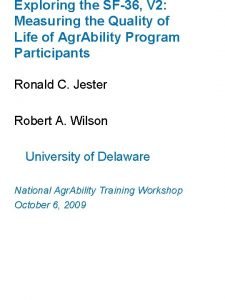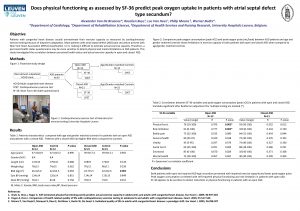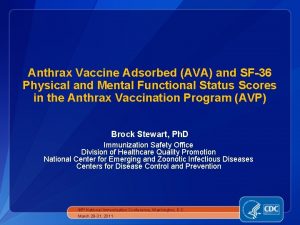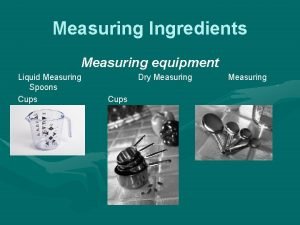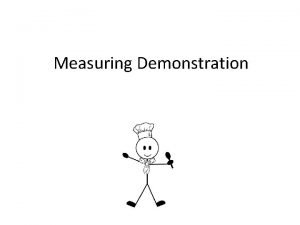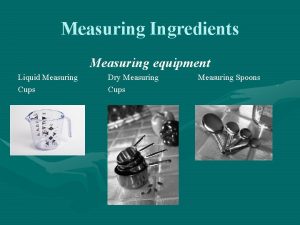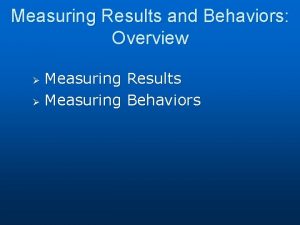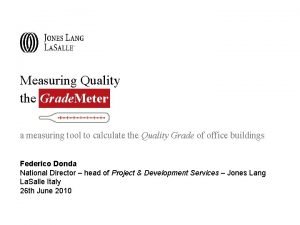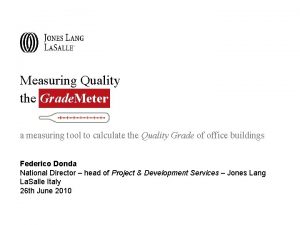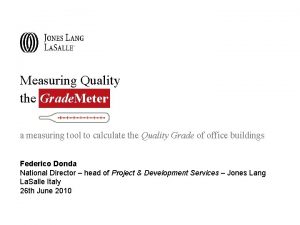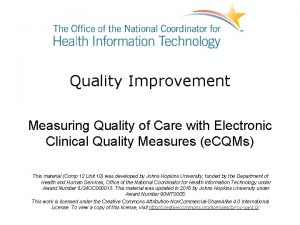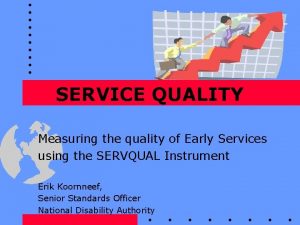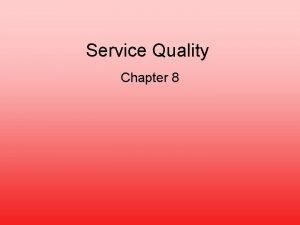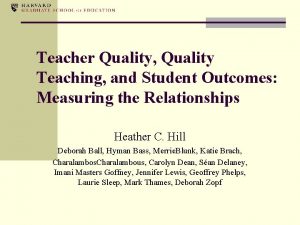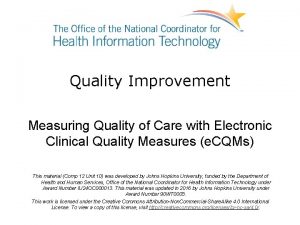Exploring the SF36 V 2 Measuring the Quality
























- Slides: 24

Exploring the SF-36, V 2: Measuring the Quality of Life of Agr. Ability Program Participants Ronald C. Jester Robert A. Wilson University of Delaware National Agr. Ability Training Workshop October 6, 2009

This evaluation focuses on Quality of Life enhancements associated with the Agr. Ability Program l l l Quality of Life is measured with the SF -36, Version 2. The SF-36 is the most widely-used quality of life survey in health research. Validity and reliability of the SF-36 has been established through thousands of studies. The SF-36 scoring program generates quality of life measures for individuals and groups. The program also produces estimates of missing data, and scale reliability measures.

SF-36 Scoring: Inputs and Outputs l l The responses to the SF-36 questionnaire are entered into the SF-36 scoring program. The scoring program produces a comprehensive quality of life profile.

Statistical Analysis l l The output from the SF-36 scoring program is imported into SPSS (Statistical Program for the Social Sciences). Examples that follow are SPSS frequencies. Follow-up data at one year are compared with these pre-test measures. T-tests ( paired samples) are performed for the SF-36 indicator (means) and the other summary indicators.

The SF-36 Summary Measures l l The SF-36 quality of life indicators include 8 sub-scales and 2 summary quality of life indices: one for physical health and one for mental health. Health outcomes are gauged by comparing the averages of these scales prior to receiving service with the averages at one year into the Agr. Ability Program.


The SF-36 is calculated for 8 sub-scales (0 -100): 1. 2. 3. 4. 5. 6. 7. 8. Physical limitations Limitations in social activities Limitations in work and home roles Bodily pain Psychological distress and wellbeing Limitations because of emotional problems Energy and fatigue General health perceptions

2 SF-36 quality of life summary scales: l l Physical Health (PH) Mental Health (MH) l All scales are calibrated according to a U. S. general population survey norm of 50.

The following illustration shows a comparison of the SF-36 summary measures prior to the administration of a program with same measures after the program is administered. s


A minimum of 2 measurements are necessary to gauge program outcome: l Time 1 l l Measurement at Program Intake Time 2 l Measurement at 1 -Year Follow-up

SF-36 Program Computer Output l Following is SF-36 output for a sample of 41 Agr. Ability clients at program intake.

Physical Functioning

Bodily Pain

General Health

Vitality

Social Functioning

Role-Emotional

Mental Health





Plans l l l Complete baseline SF-36 survey for the entire active Delaware and Maryland caseload. Complete follow-up survey by December, 2009. Complete analysis of the follow-up survey by March, 2010.
 Sf36 version 2
Sf36 version 2 Compliance vs quality
Compliance vs quality What is tqm
What is tqm Quality management pmp
Quality management pmp Quality control concepts
Quality control concepts What are quality standards in project management
What are quality standards in project management Philip crosby formulated the seven deadly diseases
Philip crosby formulated the seven deadly diseases Total quality management seminar
Total quality management seminar Crosby quality is free
Crosby quality is free Quality assurance vs quality control
Quality assurance vs quality control Thế nào là mạng điện lắp đặt kiểu nổi
Thế nào là mạng điện lắp đặt kiểu nổi Dot
Dot Bổ thể
Bổ thể Vẽ hình chiếu đứng bằng cạnh của vật thể
Vẽ hình chiếu đứng bằng cạnh của vật thể độ dài liên kết
độ dài liên kết Các môn thể thao bắt đầu bằng tiếng bóng
Các môn thể thao bắt đầu bằng tiếng bóng Khi nào hổ con có thể sống độc lập
Khi nào hổ con có thể sống độc lập điện thế nghỉ
điện thế nghỉ Nguyên nhân của sự mỏi cơ sinh 8
Nguyên nhân của sự mỏi cơ sinh 8 Một số thể thơ truyền thống
Một số thể thơ truyền thống Trời xanh đây là của chúng ta thể thơ
Trời xanh đây là của chúng ta thể thơ Thiếu nhi thế giới liên hoan
Thiếu nhi thế giới liên hoan Số.nguyên tố
Số.nguyên tố Tỉ lệ cơ thể trẻ em
Tỉ lệ cơ thể trẻ em Vẽ hình chiếu vuông góc của vật thể sau
Vẽ hình chiếu vuông góc của vật thể sau
